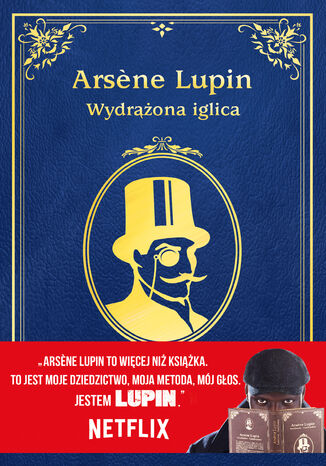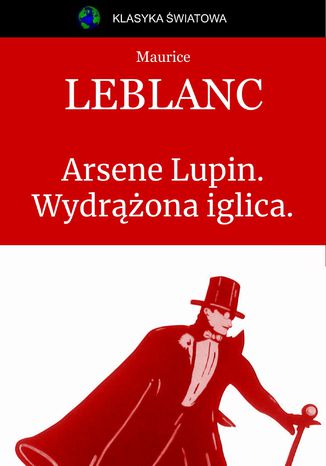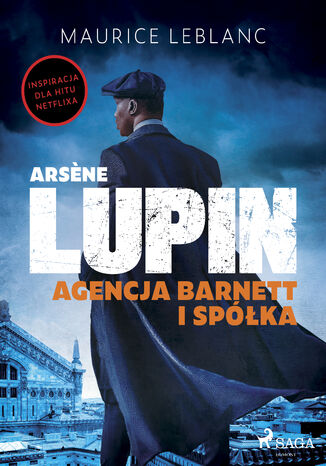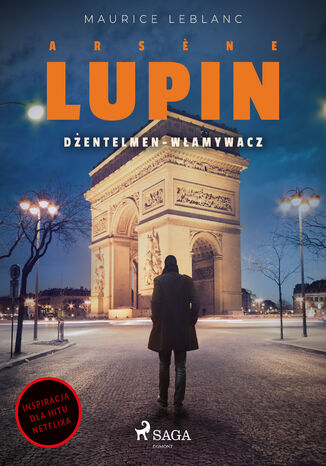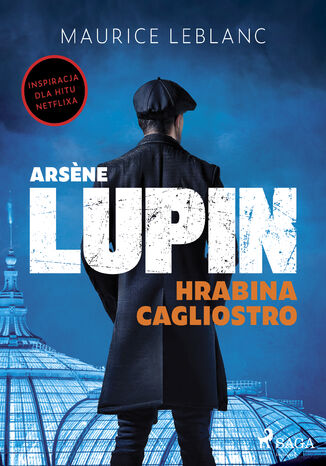Kategorie
Ebooki
-
Biznes i ekonomia
- Bitcoin
- Bizneswoman
- Coaching
- Controlling
- E-biznes
- Ekonomia
- Finanse
- Giełda i inwestycje
- Kompetencje osobiste
- Komputer w biurze
- Komunikacja i negocjacje
- Mała firma
- Marketing
- Motywacja
- Multimedialne szkolenia
- Nieruchomości
- Perswazja i NLP
- Podatki
- Polityka społeczna
- Poradniki
- Prezentacje
- Przywództwo
- Public Relation
- Raporty, analizy
- Sekret
- Social Media
- Sprzedaż
- Start-up
- Twoja kariera
- Zarządzanie
- Zarządzanie projektami
- Zasoby ludzkie (HR)
-
Dla dzieci
-
Dla młodzieży
-
Edukacja
-
Encyklopedie, słowniki
-
E-prasa
- Architektura i wnętrza
- BHP
- Biznes i Ekonomia
- Dom i ogród
- E-Biznes
- Ekonomia i finanse
- Ezoteryka
- Finanse
- Finanse osobiste
- Firma
- Fotografia
- Informatyka
- Kadry i płace
- Kobieca
- Komputery, Excel
- Księgowość
- Kultura i literatura
- Naukowe i akademickie
- Ochrona środowiska
- Opiniotwórcze
- Oświata
- Podatki
- Podróże
- Psychologia
- Religia
- Rolnictwo
- Rynek książki i prasy
- Transport i Spedycja
- Zdrowie i uroda
-
Historia
-
Informatyka
- Aplikacje biurowe
- Bazy danych
- Bioinformatyka
- Biznes IT
- CAD/CAM
- Digital Lifestyle
- DTP
- Elektronika
- Fotografia cyfrowa
- Grafika komputerowa
- Gry
- Hacking
- Hardware
- IT w ekonomii
- Pakiety naukowe
- Podręczniki szkolne
- Podstawy komputera
- Programowanie
- Programowanie mobilne
- Serwery internetowe
- Sieci komputerowe
- Start-up
- Systemy operacyjne
- Sztuczna inteligencja
- Technologia dla dzieci
- Webmasterstwo
-
Inne
-
Języki obce
-
Kultura i sztuka
-
Lektury szkolne
-
Literatura
- Antologie
- Ballada
- Biografie i autobiografie
- Dla dorosłych
- Dramat
- Dzienniki, pamiętniki, listy
- Epos, epopeja
- Esej
- Fantastyka i science-fiction
- Felietony
- Fikcja
- Humor, satyra
- Inne
- Klasyczna
- Kryminał
- Literatura faktu
- Literatura piękna
- Mity i legendy
- Nobliści
- Nowele
- Obyczajowa
- Okultyzm i magia
- Opowiadania
- Pamiętniki
- Podróże
- Poemat
- Poezja
- Polityka
- Popularnonaukowa
- Powieść
- Powieść historyczna
- Proza
- Przygodowa
- Publicystyka
- Reportaż
- Romans i literatura obyczajowa
- Sensacja
- Thriller, Horror
- Wywiady i wspomnienia
-
Nauki przyrodnicze
-
Nauki społeczne
-
Podręczniki szkolne
-
Popularnonaukowe i akademickie
- Archeologia
- Bibliotekoznawstwo
- Filmoznawstwo
- Filologia
- Filologia polska
- Filozofia
- Finanse i bankowość
- Geografia
- Gospodarka
- Handel. Gospodarka światowa
- Historia i archeologia
- Historia sztuki i architektury
- Kulturoznawstwo
- Lingwistyka
- Literaturoznawstwo
- Logistyka
- Matematyka
- Medycyna
- Nauki humanistyczne
- Pedagogika
- Pomoce naukowe
- Popularnonaukowa
- Pozostałe
- Psychologia
- Socjologia
- Teatrologia
- Teologia
- Teorie i nauki ekonomiczne
- Transport i spedycja
- Wychowanie fizyczne
- Zarządzanie i marketing
-
Poradniki
-
Poradniki do gier
-
Poradniki zawodowe i specjalistyczne
-
Prawo
- BHP
- Historia
- Kodeks drogowy. Prawo jazdy
- Nauki prawne
- Ochrona zdrowia
- Ogólne, kompendium wiedzy
- Podręczniki akademickie
- Pozostałe
- Prawo budowlane i lokalowe
- Prawo cywilne
- Prawo finansowe
- Prawo gospodarcze
- Prawo gospodarcze i handlowe
- Prawo karne
- Prawo karne. Przestępstwa karne. Kryminologia
- Prawo międzynarodowe
- Prawo międzynarodowe i zagraniczne
- Prawo ochrony zdrowia
- Prawo oświatowe
- Prawo podatkowe
- Prawo pracy i ubezpieczeń społecznych
- Prawo publiczne, konstytucyjne i administracyjne
- Prawo rodzinne i opiekuńcze
- Prawo rolne
- Prawo socjalne, prawo pracy
- Prawo Unii Europejskiej
- Przemysł
- Rolne i ochrona środowiska
- Słowniki i encyklopedie
- Zamówienia publiczne
- Zarządzanie
-
Przewodniki i podróże
- Afryka
- Albumy
- Ameryka Południowa
- Ameryka Środkowa i Północna
- Australia, Nowa Zelandia, Oceania
- Austria
- Azja
- Bałkany
- Bliski Wschód
- Bułgaria
- Chiny
- Chorwacja
- Czechy
- Dania
- Egipt
- Estonia
- Europa
- Francja
- Góry
- Grecja
- Hiszpania
- Holandia
- Islandia
- Litwa
- Łotwa
- Mapy, Plany miast, Atlasy
- Miniprzewodniki
- Niemcy
- Norwegia
- Podróże aktywne
- Polska
- Portugalia
- Pozostałe
- Przewodniki po hotelach i restauracjach
- Rosja
- Rumunia
- Słowacja
- Słowenia
- Szwajcaria
- Szwecja
- Świat
- Turcja
- Ukraina
- Węgry
- Wielka Brytania
- Włochy
-
Psychologia
- Filozofie życiowe
- Kompetencje psychospołeczne
- Komunikacja międzyludzka
- Mindfulness
- Ogólne
- Perswazja i NLP
- Psychologia akademicka
- Psychologia duszy i umysłu
- Psychologia pracy
- Relacje i związki
- Rodzicielstwo i psychologia dziecka
- Rozwiązywanie problemów
- Rozwój intelektualny
- Sekret
- Seksualność
- Uwodzenie
- Wygląd i wizerunek
- Życiowe filozofie
-
Religia
-
Sport, fitness, diety
-
Technika i mechanika
Audiobooki
-
Biznes i ekonomia
- Bitcoin
- Bizneswoman
- Coaching
- Controlling
- E-biznes
- Ekonomia
- Finanse
- Giełda i inwestycje
- Kompetencje osobiste
- Komunikacja i negocjacje
- Mała firma
- Marketing
- Motywacja
- Nieruchomości
- Perswazja i NLP
- Podatki
- Polityka społeczna
- Poradniki
- Prezentacje
- Przywództwo
- Public Relation
- Sekret
- Social Media
- Sprzedaż
- Start-up
- Twoja kariera
- Zarządzanie
- Zarządzanie projektami
- Zasoby ludzkie (HR)
-
Dla dzieci
-
Dla młodzieży
-
Edukacja
-
Encyklopedie, słowniki
-
E-prasa
-
Historia
-
Informatyka
-
Inne
-
Języki obce
-
Kultura i sztuka
-
Lektury szkolne
-
Literatura
- Antologie
- Ballada
- Biografie i autobiografie
- Dla dorosłych
- Dramat
- Dzienniki, pamiętniki, listy
- Epos, epopeja
- Esej
- Fantastyka i science-fiction
- Felietony
- Fikcja
- Humor, satyra
- Inne
- Klasyczna
- Kryminał
- Literatura faktu
- Literatura piękna
- Mity i legendy
- Nobliści
- Nowele
- Obyczajowa
- Okultyzm i magia
- Opowiadania
- Pamiętniki
- Podróże
- Poezja
- Polityka
- Popularnonaukowa
- Powieść
- Powieść historyczna
- Proza
- Przygodowa
- Publicystyka
- Reportaż
- Romans i literatura obyczajowa
- Sensacja
- Thriller, Horror
- Wywiady i wspomnienia
-
Nauki przyrodnicze
-
Nauki społeczne
-
Popularnonaukowe i akademickie
-
Poradniki
-
Poradniki zawodowe i specjalistyczne
-
Prawo
-
Przewodniki i podróże
-
Psychologia
- Filozofie życiowe
- Komunikacja międzyludzka
- Mindfulness
- Ogólne
- Perswazja i NLP
- Psychologia akademicka
- Psychologia duszy i umysłu
- Psychologia pracy
- Relacje i związki
- Rodzicielstwo i psychologia dziecka
- Rozwiązywanie problemów
- Rozwój intelektualny
- Sekret
- Seksualność
- Uwodzenie
- Wygląd i wizerunek
- Życiowe filozofie
-
Religia
-
Sport, fitness, diety
-
Technika i mechanika
Kursy video
-
Bazy danych
-
Big Data
-
Biznes, ekonomia i marketing
-
Cyberbezpieczeństwo
-
Data Science
-
DevOps
-
Dla dzieci
-
Elektronika
-
Grafika/Wideo/CAX
-
Gry
-
Microsoft Office
-
Narzędzia programistyczne
-
Programowanie
-
Rozwój osobisty
-
Sieci komputerowe
-
Systemy operacyjne
-
Testowanie oprogramowania
-
Urządzenia mobilne
-
UX/UI
-
Web development
-
Zarządzanie
Podcasty
Arsene Lupin kontra Herlock Sholmes
Arsene Lupin to przebiegły, obdarzony dużą fantazją włamywacz, którego pole działania stanowi tętniący życiem Paryż początku XX wieku. Niestraszne mu zamki ani inne zabezpieczenia, a Paryż zalewa się łzami w związku z bolesnymi stratami. Aby poskromić włamywacza, do Paryża przybywa mistrz dedukcji: angielski detektyw Herlock Sholmes. I tak oto będziemy świadkami pojedynku metod i temperamentów.
Arsene Lupin Versus Herlock Sholmes
Leblancs creation, gentleman thief Arsene Lupin, is everything you would expect from a French aristocrat witty, charming, brilliant, sly... and possibly the greatest thief in the world. Arsene Lupin versus Herlock Sholmes (Translator: George Morehead) is a collection of adventures which feature a match of wits between Lupin and Herlock Sholmes, a transparent reference to Sherlock Holmes, the hero of Conan Doyles detective stories. The novel consists of two closely linked novellas, in each of which the renowned English detective Herlock Sholmes is commissioned to come to Paris, accompanied as ever by amanuensis Dr. Wilson, to solve a crime thats assumed to have at its heart the legendary figure of master criminal Arsene Lupin. For his part, Lupin relishes the challenge of crossing mental swords with the only man on earth intelligent and resourceful enough to be a worthy rival.
Arsene Lupin. Wydrążona iglica
Jedna z najbardziej znanych powieści z Arsenem Lupinem Gdy w pałacu hrabiego de Gesvres w Ambrumésy pewnego dnia dochodzi do zuchwałej kradzieży obrazów, wszyscy są oburzeni. Śledztwo wszczyna nadinspektor Ganimard. Pomaga mu licealista Izydor Beautrelet, detektyw amator, który mimo młodego wieku sprawia słynnemu złodziejowi niemało problemów. Kiedy po kradzieży Arsene Lupin znika, nikt nie podejrzewa, że tak naprawdę gra toczy się nie o obrazy Rubensa, ale o legendarną Wydrążoną iglicę w Étretat, w której ukryto fortunę królów Francji. Arsene Lupin znów intryguje, bawi i zaskakuje nie tylko na kartach książki. Na platformie Netflix czeka serial inspirowany przygodami dżentelmena włamywacza.
Arsene Lupin. Wydrążona iglica
Arsène Lupin – postać fikcyjna, dżentelmen-włamywacz (niekiedy również detektyw), stworzony przez francuskiego pisarza Maurice’a Leblanca, który opublikował pierwszą historię o jego przygodach w 1905. Główny bohater to szarmancki, inteligentny mistrz charakteryzacji, czuły na wdzięki kobiet, potrafiący znaleźć wyjście z każdej, nawet najbardziej beznadziejnej sytuacji. Żył z kradzieży, ale jego ofiarami padali zawsze złoczyńcy. Działając poza prawem, wymierzał im sprawiedliwość. (Wikipedia)
Arsne Lupin. Agencja Barnett i Spółka
19-wieczna Francja, detektyw o onieśmielającym uśmiechu i osiem zagadek do rozwiązania. Jim Barnett to czarujący i piekielnie inteligentny detektyw. Jego beztroskie dni przerywa seria ośmiu tajemniczych zleceń. Klienci detektywa uważani są za szczęściarzy, bo oficjalnie nie płacą za jego usługi. Cwany Barnett posiada jednak inny sposób na zdobywanie zapłaty... Czy uda mu się doprowadzić każde śledztwo do końca? I kim tak naprawdę jest Barnett? Czy to być może kolejne wcielenie Lupina? Inspiracja do hitowego serialu Netflixa "Lupin" z Omarem Sy w rolach głównych. Idealna dla fanek i fanów Arthura Conana Doyle'a i Agathy Christie. Arsne Lupin Arsne Lupin seria lekkich kryminałów o francuskim złodziejaszku-detektywie, czułym na kobiece wdzięki. Maurice Leblanc (ur. 11 grudnia 1864, zm. 6 listopada 1941) francuski nowelista znany z serii książek o Arsne'ie Lupinie, szarmanckim złodzieju i detektywie.
Arsne Lupin. Arsne Lupin kontra Herlock Sholmes
Starcie gigantów! Przez Paryż przetacza się seria brawurowych kradzieży połączonych z brutalnymi napaściami. Sprawca umyka policji, która na liście podejrzanych umieszcza Arsne'a Lupina. Bezradni poszkodowani zwracają się o pomoc do słynnego na cały świat Herlocka Sholmesa (sic!). Lupin nie może pozwolić, by jego największy wróg działał na jego własnym terenie, więc nawołuje Sholmesa do odwrotu. Bezskutecznie. Dwie wielkie persony rozpoczynają wyścig z czasem i potyczkę na spryt. W 2021 r. na platformie Netflix premierę miał serial "Lupin" zainspirowany książkowymi przygodami Arsnea Lupina. Kontynuacja tomu przygód Dżentelmen włamywacz" zachwyci miłośników twórczości Arthura Conana Doyle'a.
Arsne Lupin. Dżentelmen-włamywacz
Narodziny bohatera. Opowiadania kryminalne, które do panteonu wielkich bohaterów (jak Sherlock Holmes czy Herkules Poirot) wprowadzają nową postać - Arsne'a Lupina. Mistrz w sztuce rabunku, inteligentny złodziej obdarzony talentem do kamuflażu, a przy tym niezwykle szarmancki mężczyzna - oto jego supermoce. Lupin trzyma się przy tym żelaznych zasad - rabuje tych, którzy zasługują na karę, za to zawsze stoi po stronie biednych. W 2021 r. na platformie Netflix premierę miał serial "Lupin" zainspirowany książkowymi przygodami Arsnea Lupina. Gratka dla fanów twórczości Arthura Conana Doyle'a.
Arsne Lupin. Hrabina Cagliostro
Światowej sławy złodziejaszek, tajemnica wiecznej młodości i podejrzany spisek. Młody Lupin zaczyna stawiać pierwsze kroki w swoim "zawodzie". Od razu zostaje rzucony na głęboką wodę ratuje przed śmiercią przepiękną hrabinę Cagliostro. Oficjalnie kobieta padła ofiarą spisku. Lupin staje się jednak podejrzliwy i odkrywa, że piękna i z pozoru młodziutka hrabina może mieć nawet 100 lat, a jej przeszłość może kryć w sobie poważne przestępstwa. Czemu hrabina zawdzięcza swój sekret młodości? Czego dopuściła się w przeszłości? Lupin nie odpuści, dopóki nie dowie się prawdy. Inspiracja do hitowego serialu Netflixa "Lupin" z Omarem Sy w rolach głównych. Idealna dla fanek i fanów Arthura Conana Doyle'a i Agathy Christie. Arsne Lupin Arsne Lupin seria lekkich kryminałów o francuskim złodziejaszku-detektywie, czułym na kobiece wdzięki. Maurice Leblanc (ur. 11 grudnia 1864, zm. 6 listopada 1941) francuski nowelista znany z serii książek o Arsne'ie Lupinie, szarmanckim złodzieju i detektywie.



